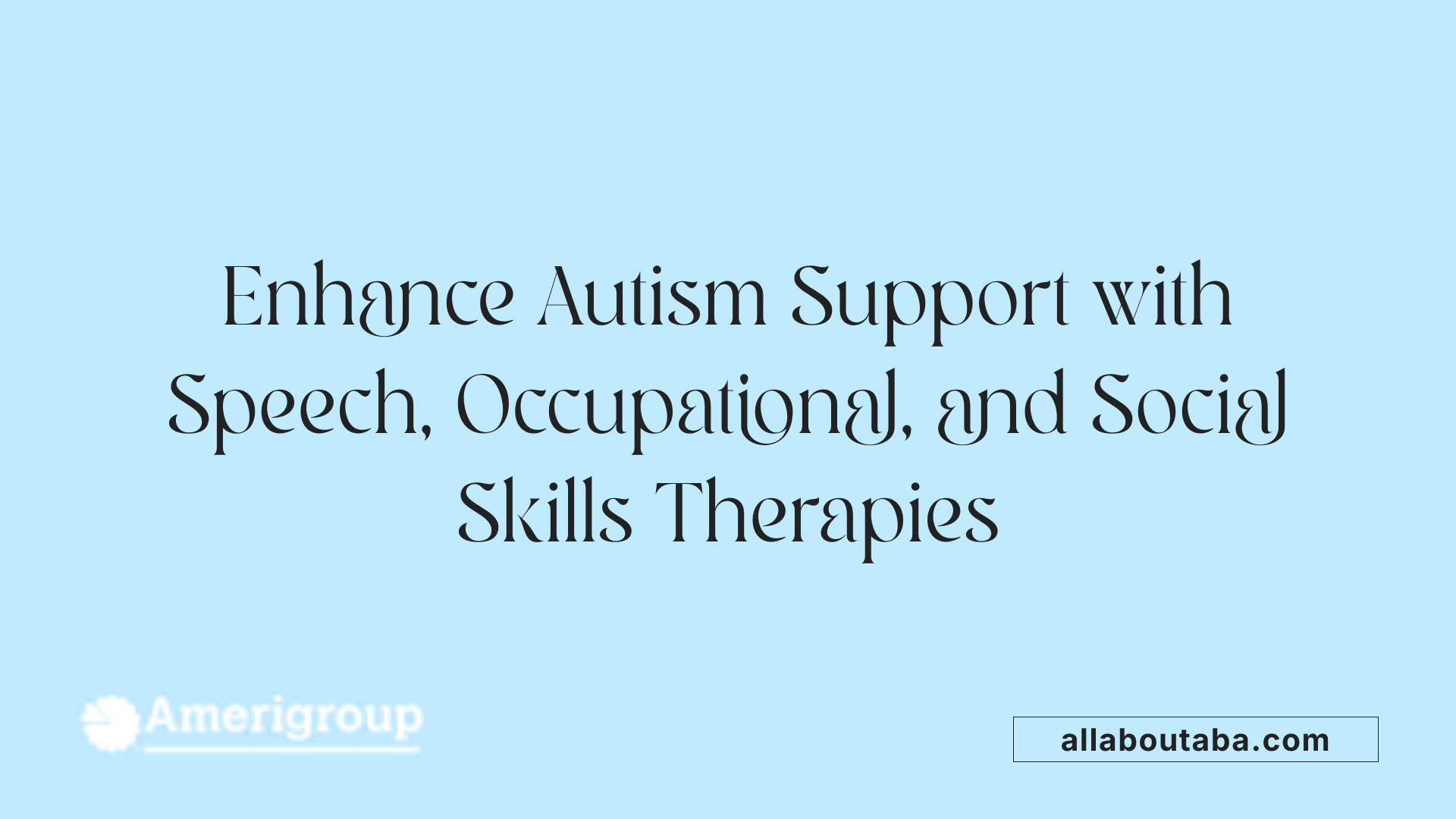The Importance of Early and Comprehensive Planning
For individuals with autism spectrum disorder (ASD), planning for long-term care is essential to securing a stable, supportive, and fulfilling future. Beyond childhood intervention, thoughtful life planning involves behavioral therapies, caregiver selection, legal and financial preparation, and coordination with specialized professionals. Early and personalized planning ensures that adults with autism continue to receive needed care and independence even when parental support is no longer available.
Understanding Behavioral Analysis Therapy in Autism Treatment

What is behavioral analysis therapy and how is it used in treating autism?
Behavioral analysis therapy, commonly known as Applied Behavior Analysis (ABA), is a science-based approach to understanding and changing behavior. It is widely used in treating children and individuals with autism spectrum disorder (ASD). ABA focuses on increasing helpful behaviors—such as communication, social skills, and self-care—while reducing behaviors that may hinder learning or daily functioning.
What are key techniques in ABA therapy?
ABA uses several techniques to encourage positive behavior change. One major technique is positive reinforcement, where desired behaviors are rewarded to encourage their repetition. Another essential tool is the A-B-C model, which stands for Antecedent-Behavior-Consequence. This model helps therapists understand what triggers a behavior and what follows it, enabling targeted interventions. Techniques like discrete trial training (DTT) and pivotal response training (PRT) are also used to teach specific skills in structured or natural environments.
What are the goals and settings of ABA therapy?
ABA programs are highly individualized, tailored to the unique needs of each person. Goals may include improving communication, social interaction, play skills, motor abilities, academic skills, and promoting independence in daily life. Therapy can take place in home settings, schools, clinics, or community locations, wherever it best fits the individual's lifestyle. Qualified behavior analysts (BCBAs) design and oversee these programs based on thorough assessments.
What evidence supports ABA’s effectiveness in autism treatment?
ABA is recognized as an evidence-based treatment endorsed by the US Surgeon General and the American Psychological Association. Research shows that intensive ABA therapy—typically 25 to 40 hours per week over one to three years—can significantly improve intellectual functioning, language, social skills, and daily living abilities for children with autism. These improvements contribute to greater independence and quality of life.
Providers of Behavioral Analysis Therapy: Qualifications and Roles

Who provides behavioral analysis therapy for autism?
Behavioral analysis therapy for autism is mainly delivered by specially trained professionals in Applied Behavior Analysis (ABA). The primary providers are Board Certified Behavior Analysts (BCBAs) and Registered Behavior Technicians (RBTs).
Role of Board Certified Behavior Analysts (BCBAs) and Registered Behavior Technicians (RBTs)
BCBAs design and oversee individualized ABA programs. Through detailed assessments, they create treatment plans tailored to meet each person's unique needs. These analysts supervise therapy sessions and adjust strategies as needed. Registered Behavior Technicians, who receive direct training, implement these plans during therapy sessions, applying techniques like positive reinforcement and the A-B-C model (Antecedent-Behavior-Consequence) to encourage helpful behaviors and reduce problematic ones.
Importance of provider credentials and experience
Ensuring that ABA providers hold proper credentials — such as BCBA certification and RBT registration — is crucial. Experienced providers have a deeper understanding of evidence-based methods and can adapt programs effectively, contributing to better outcomes in communication, social skills, and daily living.
Collaboration with families and caregivers
Providers work closely with families and caregivers to tailor therapies and support success in daily life. Family involvement encourages consistent practice of skills and helps ensure that therapy fits the child's needs. Open communication allows for questions and adjustments, fostering a team approach essential for lasting progress.
Integrating Complementary Therapies to Support Long-Term Functioning

What are developmental approaches like speech and language therapy?
Developmental therapies target communication and daily living skills critical to long-term success. Speech and language therapy focuses on enhancing the understanding and use of spoken language or alternative communication methods. This improvement supports better social interaction and greater independence, which are essential for adaptive functioning.
How does occupational therapy and sensory integration help?
Occupational therapy encompasses sensory integration and physical therapy to strengthen sensory processing and motor skills. These therapies enable individuals with autism to better navigate their environment and perform everyday tasks more independently, fostering self-reliance.
What educational techniques are used, such as TEACCH?
TEACCH employs visual supports and structured routines tailored to the learning preferences of individuals with autism. By providing a predictable and visually organized learning environment, TEACCH enhances educational outcomes and helps children acquire vital academic and life skills.
What are social-relational approaches like DIR/Floor Time and social skills groups?
Social-relational methods emphasize developing social interaction capabilities and emotional connections. DIR/Floor Time encourages engagement through play-based activities, while social skills groups offer guided opportunities to practice interpersonal skills. These approaches support social integration and improve emotional bonds.
How do these therapies support adaptive functioning and independence?
Together, these complementary therapies holistically address multiple developmental areas. By improving communication, sensory processing, motor abilities, academic skills, and social relationships, they build a foundation for greater independence and adaptive functioning. Integrating these therapies with behavioral treatments like ABA helps individuals with autism achieve more meaningful long-term outcomes.
Comprehensive Life Planning: Legal, Financial, and Caregiving Considerations

Why Early Planning is Essential for Adults with Autism
Early planning for long-term care ensures that adults with autism receive consistent and appropriate support, especially when parents or guardians are no longer able to provide care. Taking steps early helps address future needs proactively, providing peace of mind for families.
Importance of Documenting Medical and Developmental History
Maintaining thorough records of medical history and developmental milestones is crucial. This documentation aids future caregivers and professionals in understanding the individual's needs and preferences, facilitating better personalized care over time.
Selecting Caregivers: Key Qualities and Background Checks
Choosing caregivers involves careful assessment of qualities such as caring nature, competence, cooperation, compatibility, and effective communication. Comprehensive background checks and reference verification help ensure the safety and reliability of chosen caregivers.
Building a Professional Support Team
A multidisciplinary team including lawyers, accountants, and medical professionals is vital for managing legal, financial, and health-related decisions. This collaborative approach offers comprehensive guidance through complex planning and ensures all aspects of care are addressed.
Integrating Estate Planning and Financial Resources
Estate planning should be integrated into long-term care strategies to secure financial stability and clear resource allocation. Understanding and organizing financial assets help protect the individual's future, making sure funds are appropriately managed and accessible.
Exploring Government Programs
Government support programs such as Medicaid, Supplemental Security Income (SSI), and Social Security provide essential financial and medical assistance. Documenting eligibility and enrolling early in these programs is a critical step for sustained support.
| Aspect | Details | Importance |
|---|---|---|
| Early Planning | Start early to prepare for adult care needs | Ensures continuity of care and reduces future uncertainty |
| Documentation | Maintain detailed medical and developmental records | Supports informed caregiving and effective service delivery |
| Caregiver Selection | Evaluate personal qualities, conduct background checks | Guarantees safety and compatibility |
| Professional Team | Include legal, financial, and medical experts | Provides comprehensive, coordinated support |
| Estate Planning & Finances | Organize assets, develop clear wills and trusts | Secures financial future and resource management |
| Government Programs | Medicaid, SSI, Social Security | Critical for financial assistance and healthcare coverage |
Accessing Services and Support Systems: Insurance, Coverage, and Community Resources
Insurance Coverage for ABA and Behavioral Health Treatment (BHT)
Applied Behavior Analysis (ABA) therapy and related behavioral health treatments for autism spectrum disorder (ASD) are often covered by private insurance plans and Medicaid when identified as medically necessary. Providers customize treatment plans to meet individual needs, which insurance programs like Kern Family Health Care (KFHC) must approve before services begin.
Eligibility and Requirements for Services Under Programs Like KFHC
To qualify for behavioral health treatment services under KFHC, an individual must be under 21 years of age, have a formal ASD diagnosis, and demonstrate behaviors that interfere with daily life, such as communication challenges or aggression. Services require a prescription by a licensed provider and adherence to the patient's approved treatment plan for authorization.
No-Cost Services for Medically Necessary Treatment
Once approved, families often receive BHT services at no out-of-pocket cost. This includes a range of therapies aimed at improving independence and quality of life. The no-cost structure greatly supports consistent access to necessary care for eligible members.
Mental Health and Additional Screenings
KFHC also offers outpatient mental health services, including psychotherapy and psychiatric consultations for mild to moderate conditions, without the need for prior authorization. Further, they provide alcohol misuse screening for members aged 18 and older, offering annual risk assessments and brief intervention sessions to address potential concerns early.
Limitations of Covered Services and Importance of Coordinated Care
While ABA and BHT are covered, some services are excluded, such as relational mental health therapies (e.g., couples or family therapy addressing relationship problems) and treatments for major alcohol-related issues. This highlights the need for families and providers to coordinate care carefully, ensuring comprehensive support while navigating coverage boundaries effectively.
Securing a Future of Independence and Support
Long-term care planning for individuals with autism requires a multidisciplinary and proactive approach. Combining evidence-based behavioral therapies like ABA with complementary interventions establishes a foundation for growth and independence. Equally important is the thoughtful preparation of legal, financial, and caregiving frameworks to sustain support throughout adulthood. Engaging qualified professionals, securing coverage for necessary treatments, and utilizing available government resources empower families and individuals to navigate life transitions confidently. Through comprehensive and early planning, the autism community can ensure a resilient and supportive future for all.
References
- Applied Behavior Analysis (ABA)
- Glenwood - Helping Children & Adults With Autism
- Behavioral health
- Treatment and Intervention for Autism Spectrum Disorder
- The Growing Need for Longer Term Care Plans for Adults ...
- Applied Behavior Analysis (ABA)
- Applied Behavior Analysis (ABA)
- Applied Behavior Analysis (ABA)







